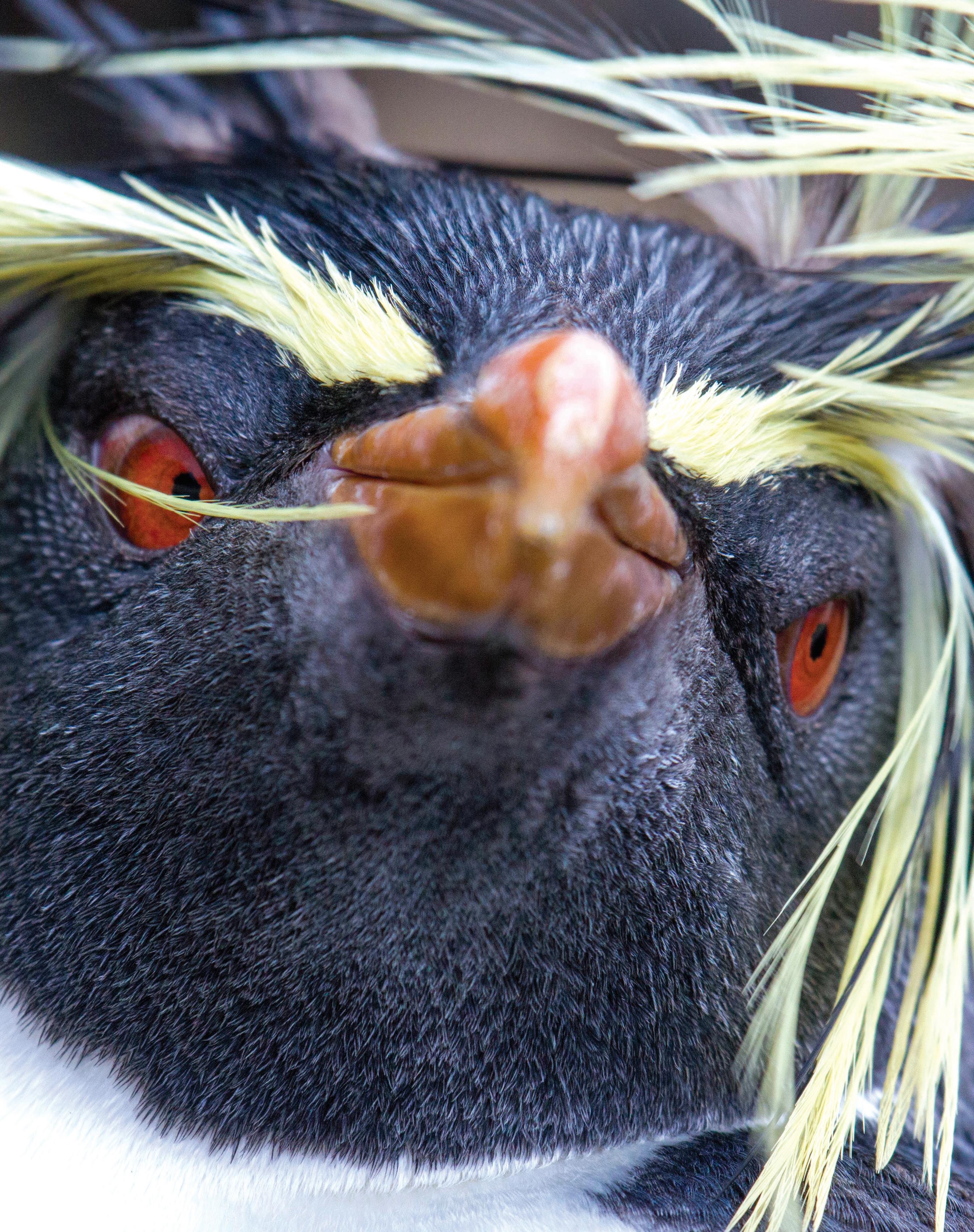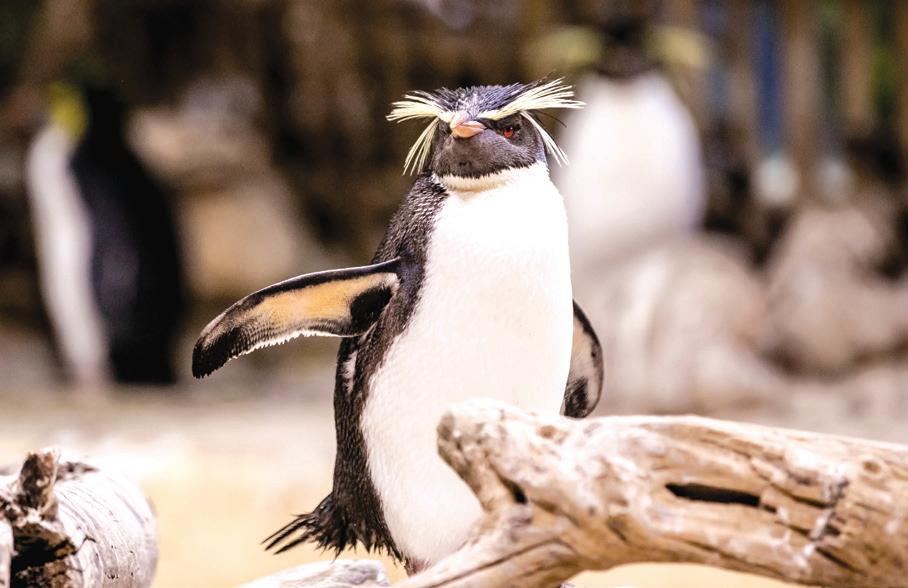
3 minute read
ISLAND ROCK STARS
While rockhopper penguins might be considered the most characterful species in the avian world, they follow a structured, intricate and balanced life cycle. Naturalist Georgina Jones tells us more.
PERHAPS rockhopper penguins STRONG PAIR BONDS should more accurately be called Around South Africa, northern rockrockclimbers. So agile are these hoppers are usually vagrant moulting charming birds that they can nest 250m juveniles. Southern rockhoppers are up on steep cliffs, using their beaks to rarely seen, although both species are steady themselves as they jump and occasionally found bearing capture clamber up near-vertical rock faces. marks. These animals have probably Rockhoppers are the smallest of the been caught by fishing boats, kept for crested penguins, a group of six species entertainment, and then thrown overof penguins with distinctive yellow board before reaching port to avoid being crests. They’re not the only penguins fined. (It is illegal to keep these birds.) to hop over rocks, but since they live on In the wild, however, rockhoppers return the Falklands, and on Marion, Tristan to their birth islands in spring, where they and Gough islands, they were first to gather in loose colonies, fighting and buildbe observed by mariners and so got ing their nests, either in burrows among their name. tussock grass or on rocks in the open. There are two species of rockhopper They establish strong pair bonds and, once penguins: the northern, found on Gough mated, a couple will nest and rear chicks and the Tristan island group, and the together through their lifetimes. southern, which has two subspecies, one Once the nest is ready, the female lays around the Falklands and another from the two eggs several days apart, the first Prince Edward Islands and further east. smaller than the second. The parents take turns to brood the eggs, incubating them for about a month. When the chicks hatch, the larger male stays on the nest to warm and protect the chicks, while the smaller female heads out to sea on short foraging trips for food for the young.


CURIOUS CASE OF THE EXTRA EGG
The chick from the first-laid egg is usually doomed. Most often this egg doesn’t hatch. And if it does, the female usually doesn’t feed the chick so it starves. There has been speculation over why the first egg is laid at all: rockhoppers clearly cannot feed two chicks and preferentially feed the larger, more robust chick. It may be that this is evolution in action. Rockhoppers spend the winter in the open ocean, never coming to land. The first egg develops while at sea when the female is physically incapable of diverting enough resources to grow a viable egg. Perhaps it’s easier energy-wise to retain the double egg system than to adjust biology to produce only one egg.
Did you know? Did you know?
›› Rockhoppers live to around 10 years in the wild. ›› They grow to around 56cm and weigh between 2-3kg, making them the smallest of the crested penguins. ›› Their sharp claws and strong legs make it easy for them to scramble up steep rock faces. ›› They can hop 2 metres in a single go. LEFT: Rockhoppers at Two Oceans Aquarium delight visitors. ABOVE: Northern rockhopper penguins on their native Nightingale Island.
So, even though two eggs are laid, rockhoppers raise only one chick, which is fed by the female while the male fasts and protects it. Once the chick leaves the nest for the crèche of other chicks, both parents feed it until it heads out to sea as a blackand-white juvenile. Its distinctive yellow crests only start to develop after the first moult.
When moulting, rockhoppers first undertake a short pre-moult foraging trip, feeding enormously and gaining food reserves to see themselves through the moult. Their new feathers start growing a few days before they get back to land, and once there, they must wait out the moulting period, fasting while their new feathers grow and the old ones are lost. The moult is finally complete when the birds waterproof their new feathers with oil from their preen glands. They are then able to brave the waters of the southern oceans. Here they spend the four to six months of winter foraging before returning to land to climb the steep cliffs and start nesting once more.
›› They are known to burst from the water near shore and land on rocks with a belly flop. ›› They have ruby eyes beneath their bright yellow eyebrows. ›› All breeds of penguins are protected from egg collecting and hunting by law.








